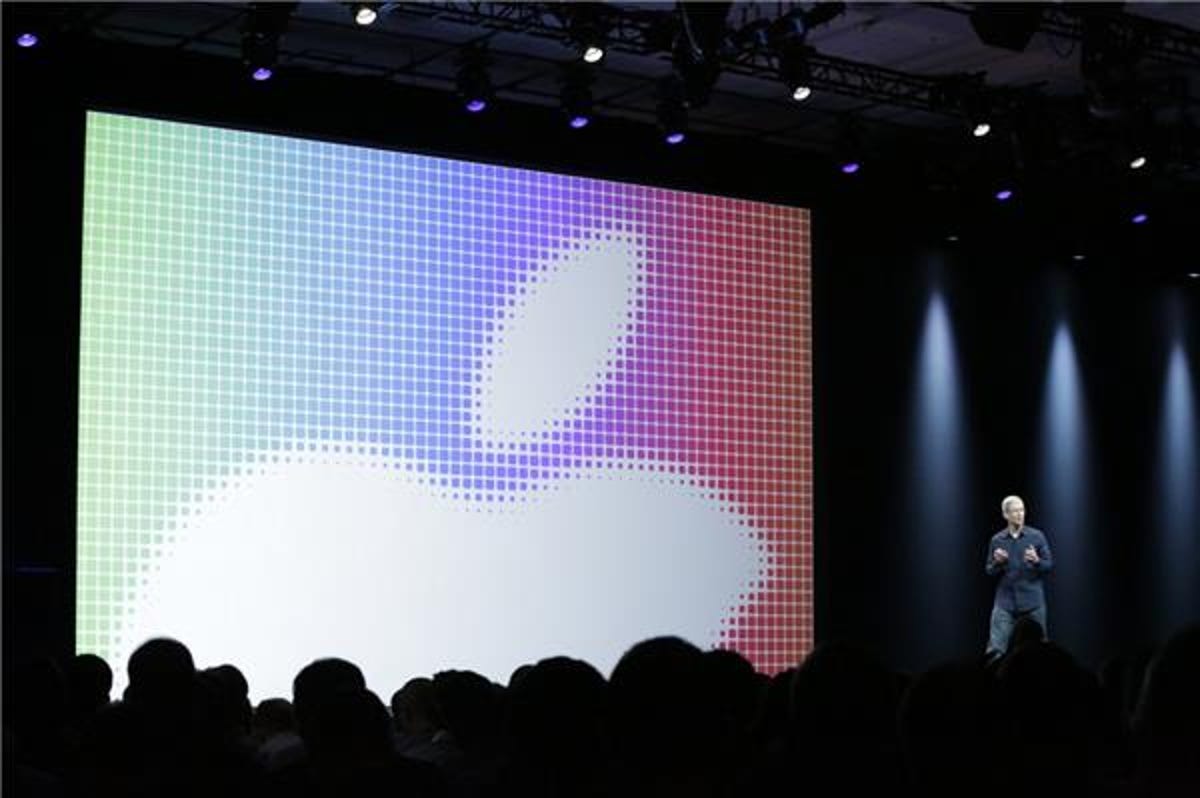
Tim Stevens/CNET
Contrary to some expectations, an iWatch software development kit was not announced this week at Apple’s Worldwide Developers Conference.
Alas.
Even if such an SDK exists or is in the works, providing information about it would simply be too big a hint to drop in advance of hardware that might ship in the fall. However, more features and core technologies were announced at WWDC that could come into play in an Apple watch. These included:
HealthKit and the Health app
. The release of an OS function and attendant app to aggregate information from multiple vitals-monitoring devices such as the Jawbone UP may seem to indicate Apple is leaving this niche to third parties. However, it may be helpful to remember that the company originally introduced iTunes as a music hub, in part, to handle the transfer of music between the Mac and contemporary devices such as the pioneering Diamond Multimedia Rio and Creative Nomad Jukebox prior to the introduction of the iPod.
While that device virtually wiped out the presence of competitors from iTunes (as well as in the market generally), HealthKit would likely accept input from an Apple wearable as well as from third parties. First off, one must remember that the iPhone itself is now a capable pedometer. If steps were all that Apple wanted to track, it wouldn’t need HealthKit. Regardless of what an Apple watch might measure (the Basis watch provides some possible clues), it certainly won’t measure something like food intake (at least precisely) or likely be able to measure multiple exercises by using devices in tandem like Moov bands.
HomeKit. In addition to reaching out to any number of sensors on our person, Apple also announced its initiative to reach out to controls all around the home with HomeKit. The initiative promises to allow control of multiple objects around the house via an iOS device such as an iPhone or iPad, putting further pressure on high-end home control vendors such as Crestron.
What might this have to do with a watch? Not much per se, but it was during this portion of its presentation that Apple divulged it would enable the control via Siri. This — combined with the news that Siri would be able to be activated hands-free by calling out, “Hey Siri” — would obviate the need to scroll through a complex iPhone app in order to turn down the thermostat and set up an Apple watch to handle that and other tasks. We can expect Google Now to play a similar role on Android Wear and Cortana on a Microsoft smartwatch, should rumors about its existence prove true.
New widgets and notification manager. When Apple introduced Dashboard, the idea of lightweight mini-apps in the tradition of Desk Accessories from the early days of Mac OS seemed like the kind of functionality ideal for a wearable device with a small display. Despite widgets being touted as a feature of the original iPhone, these were really just simple iPhone apps. Now, though, the move of widgets from dashboard to the notification area (with a striking resemblance to Windows Vista’s sidebar “gadgets”) has paved the way for them to show up on the iPad, the iPhone, and the iWatch. Similarly, the ability to take quick actions in response to notifications — in part a competitive response to a similar Android feature — would greatly improve the utility of notifications on Apple wristwear.
Apparently, we’ll have to use another device to mark time until the fall, when the new software may finally come to support the kind of new category that CEO Tim Cook has promised Apple will enter.



